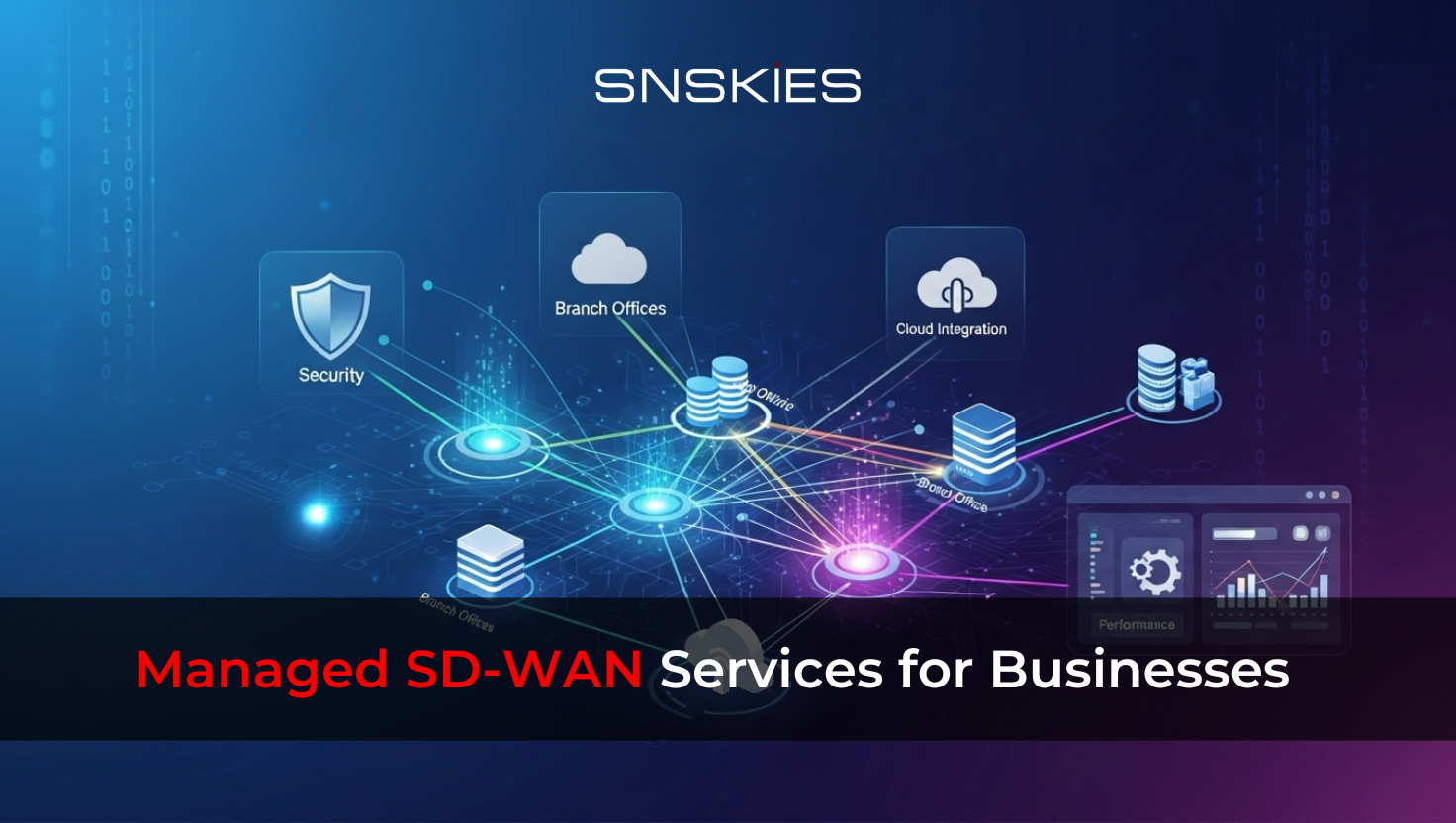- Articles
SASE Solutions Explained: The Future of Cloud Security and Connectivity
- Articles
SASE Solutions Explained: The Future of Cloud Security and Connectivity
- Articles
- November 3, 2025
In a world where cloud adoption and remote work are redefining how businesses operate, SASE Solutions (Secure Access Service Edge) have emerged as the backbone of secure and efficient digital transformation. By combining network security as a service and cloud-based connectivity, SASE unifies multiple security functions—like SD-WAN, CASB, SWG, ZTNA, and FWaaS—into one integrated architecture. Let’s dive into what makes SASE the future of cybersecurity and why organizations are adopting managed SASE to strengthen both security and performance.
What Is SASE?
So, what is SASE in simple terms? SASE (Secure Access Service Edge) is a cloud-native framework that integrates networking and security into a single service model. It delivers secure, optimized access to applications and data from any device, anywhere.
In the context of cybersecurity, what is SASE in cyber security means combining software-defined networking (SD-WAN) with advanced security controls to ensure that data is protected, and users are verified before access is granted.
Key Components of the SASE Architecture
1. Secure Web Gateway (SWG)
The SWG (Secure Web Gateway) is a protective filter between users and the internet. It blocks access to harmful websites, prevents malware downloads, and stops phishing attacks. Acting as a web traffic guardian, it ensures users access only safe and authorized resources.
2. Cloud Access Security Broker (CASB)
CASB (Cloud Access Security Broker) provides real-time monitoring and control over cloud applications. It enforces compliance and security policies, reduces data leakage risks, and enables safe cloud adoption. When integrated into a unified SASE environment, CASB becomes one of the top CASB solutions for maintaining data integrity across hybrid infrastructures.
3. Zero Trust Network Access (ZTNA)
ZTNA works on the principle of “never trust, always verify.” It allows secure, identity-based access to resources, whether they are on-premises or in the cloud. Compared to VPNs, SASE vs ZTNA highlights ZTNA’s dynamic verification process, which significantly reduces the risk of unauthorized access.
4. Firewall-as-a-Service (FWaaS)
FWaaS extends traditional firewall capabilities to the cloud. It inspects all traffic at the application layer and blocks potential threats. Being cloud-based, it scales easily and adapts to business needs, providing centralized security enforcement.
5. Software-Defined Wide Area Network (SD-WAN)
SASE SD-WAN optimizes connectivity by routing traffic intelligently based on real-time performance metrics. It enhances user experience, minimizes latency, and ensures reliable connections—especially critical for distributed teams and remote work setups.
6. Centralized Management
One of the biggest benefits of SASE is centralized management. Instead of juggling multiple security tools, SASE brings them under a single platform. This unified view allows easy monitoring, consistent policy enforcement, and simplified administration.
Benefits of SASE Solutions
The SASE benefits are far-reaching, offering both security and agility.
- Enhanced Security: Integrates ZTNA, CASB, and FWaaS for end-to-end data protection.
- Improved Performance: Optimized routing ensures fast, reliable access to cloud and SaaS applications.
- Scalability: Cloud-based architecture supports business growth without infrastructure strain.
- Cost Efficiency: Reduces dependency on multiple vendors and hardware investments.
- Visibility & Control: Offers granular insights into network and user activity through a centralized dashboard.
Organizations seeking the best SASE solution for unified access can leverage these benefits to secure users and applications seamlessly—whether they’re in the office or on the move.
What Is Security Service Edge (SSE)?
Security Service Edge (SSE) is a subset of SASE that focuses purely on the security aspect—like SWG, CASB, and ZTNA—without the networking functions. SSE enhances SASE by strengthening visibility, access control, and compliance across hybrid and cloud environments.
SASE vs SD-WAN
While SD-WAN focuses mainly on improving network performance and connectivity, SASE combines those features with security layers. Essentially, SASE = SD-WAN + security functions like ZTNA, FWaaS, and CASB. This makes SASE the superior choice for businesses that need both speed and protection.
SASE vs ZTNA
ZTNA is a component within SASE. While ZTNA provides secure access through identity verification, SASE expands on this by combining ZTNA with network optimization, cloud access control, and firewall protection. So, ZTNA is the “who can enter,” while SASE decides “how and where they connect securely.”
SASE and the Unified Client Agent (UCA)
The Unified Client Agent (UCA) simplifies SASE deployment by combining multiple agents—like those for ZTNA, SWG, and SD-WAN—into one lightweight client. This reduces endpoint complexity and ensures consistent user protection across devices.
SASE vs VPN
Traditional VPNs create a single entry tunnel that can become a bottleneck and expose vulnerabilities. SASE, with its ZTNA and cloud-native design, verifies every user and device dynamically, offering stronger, more scalable protection. The comparison of SASE vs VPN clearly shows that SASE is built for modern, hybrid, and cloud-based infrastructures.
Managed SASE Services
Businesses are now opting for managed SASE to simplify implementation and management. Managed service providers deliver continuous monitoring, configuration, and threat intelligence, ensuring optimal performance and security without the complexity of in-house management.
SASE and the Future of Cybersecurity
As cyber threats grow more sophisticated, SASE solutions represent the evolution of network security as a service. They bridge the gap between performance and protection, empowering businesses to innovate securely in the cloud era. Adopting a managed SASE model enables organizations to future-proof their infrastructure while maintaining flexibility and compliance.
FAQs About SASE Solutions
SASE integrates networking and security functions to deliver secure, cloud-based connectivity across distributed users and devices.
SASE provides centralized security, scalability, cost savings, and improved performance through unified management.
No. SD-WAN enhances connectivity, while SASE combines SD-WAN with advanced security features like CASB and ZTNA.
SSE focuses on the security elements of SASE—like SWG, CASB, and ZTNA—without including SD-WAN.
Managed SASE offers expert oversight, 24/7 monitoring, and hassle-free deployment for optimized cloud security.
Recent Post
- All Posts
- Articles


